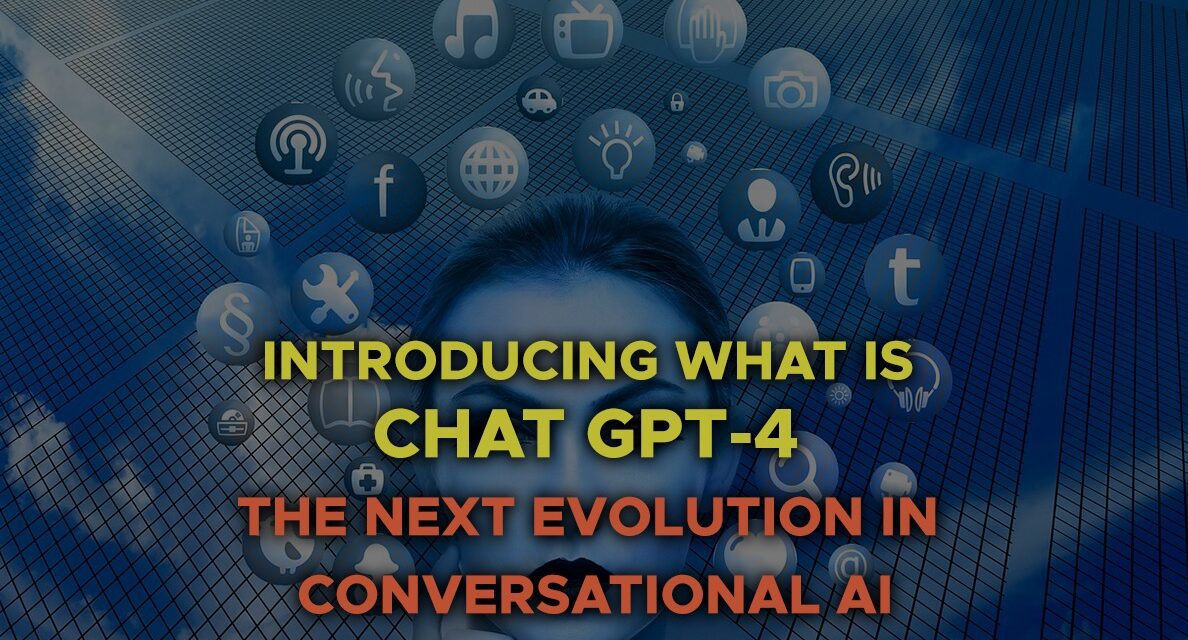What is ChatGPT-4 In the ever-evolving landscape of artificial intelligence, OpenAI has once again pushed the boundaries with the release of ChatGPT-4. As a testament to their commitment to innovation, ChatGPT-4 represents a significant leap forward in the realm of conversational AI, promising even more human-like and contextually relevant interactions. This new iteration builds upon the foundation laid by its predecessors and brings about remarkable advancements that have the potential to revolutionize the way we interact with AI systems.
Understanding : A Brief Overview
ChatGPT-4 is a language model developed by OpenAI, based on the GPT-4 architecture, which stands for “Generative Pre-trained Transformer 4.” Like its predecessors, it is designed to understand and generate human-like text based on the input it receives. This model has been trained on an extensive dataset containing diverse and vast amounts of text from the internet, enabling it to comprehend a wide range of topics and respond in a coherent and contextually relevant manner.
Advancements Over Previous Versions
ChatGPT-4 boasts several key advancements over its predecessors, which contribute to its improved performance and more natural conversations:
Contextual Understanding: One of the standout features of ChatGPT-4 is its enhanced ability to maintain context throughout a conversation. It can better understand nuanced prompts, follow intricate discussions, and provide more accurate and coherent responses over extended interactions.
Expanded Word Limit: Unlike its predecessors, ChatGPT-4 can handle significantly longer text inputs. This enables users to provide more detailed instructions and information, leading to more comprehensive responses.

Few-shot Learning: ChatGPT-4 requires even fewer examples to grasp the nuances of a task. This makes it easier to fine-tune the model for specific applications, such as drafting emails, writing code, or providing educational explanations.
Common Sense Reasoning: OpenAI has made strides in imbuing ChatGPT-4 with a better grasp of common sense reasoning. This helps it generate more accurate and realistic answers, especially in scenarios where the information provided is incomplete or ambiguous.
Reduced Biases and Sensitivity: OpenAI has placed a strong emphasis on reducing biases in ChatGPT-4’s responses. While the system may not be entirely immune to biases, it exhibits a notable improvement in handling sensitive topics and producing fairer outputs.
Potential Applications
The applications of ChatGPT-4 are vast and diverse:
Customer Support: Businesses can employ ChatGPT-4 to provide more personalized and effective customer support, addressing queries and concerns with human-like understanding.
Content Generation: Content creators can utilize ChatGPT-4 to assist in drafting articles, blog posts, and creative pieces, speeding up the writing process without compromising on quality.
Education: ChatGPT-4 can serve as an AI tutor, helping students with explanations, homework assistance, and clarifications on various subjects.
Idea Exploration: Users can brainstorm ideas with ChatGPT-4, exploring different concepts, scenarios, and solutions.
Ethical Considerations
While ChatGPT-4 represents a remarkable advancement, it also raises important ethical considerations. As with any AI system, ensuring responsible use and addressing potential misuse, bias, and privacy concerns remains crucial.
In Conclusion
ChatGPT-4 marks a significant milestone in the field of conversational AI, demonstrating OpenAI’s commitment to pushing the boundaries of technology. With its improved contextual understanding, expanded capabilities, and enhanced common sense reasoning, opens up new possibilities for more natural and productive interactions between humans and machines. As developers and researchers continue to refine these systems, it’s essential to strike a balance between innovation and responsibility to harness the full potential of AI for the betterment of society.





